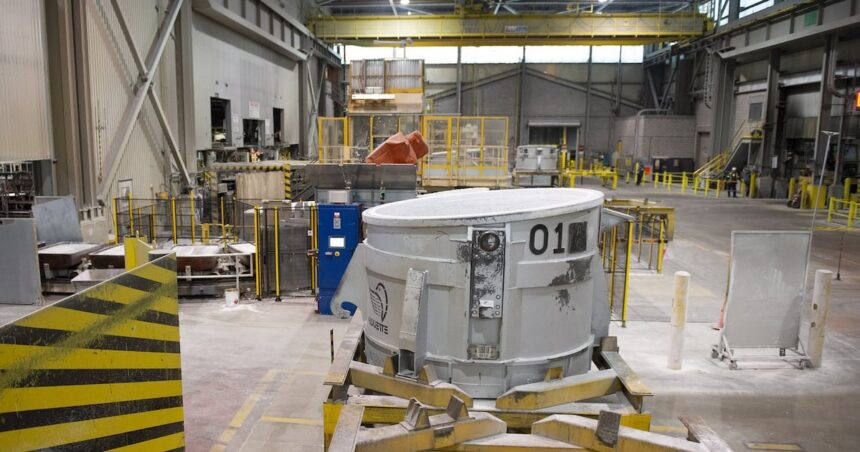In the shadow of Mont-Sainte-Anne, where Quebec’s industrial heartland meets its renewable energy prowess, a significant development is reshaping Canada’s industrial landscape. Aluminum giant Alouette has announced a massive $1.5 billion investment to modernize and expand its Sept-Îles smelting operation, following the successful negotiation of a crucial electricity agreement with Hydro-Québec.
The announcement comes at a pivotal moment for North America’s industrial sector. As global aluminum markets navigate choppy waters, this investment signals both confidence in Quebec’s manufacturing future and recognition of aluminum’s critical role in the green economy transition.
“This represents more than just capital flowing into our region,” explains Michel Desbiens, CEO of Alouette. “We’re creating a template for how energy-intensive industries can evolve in a carbon-conscious marketplace while maintaining global competitiveness.”
At the core of the deal sits a renegotiated power contract that provides Alouette with 450 megawatts of hydroelectric power at preferential rates through 2040—enough electricity to power roughly 270,000 homes. The agreement includes provisions linking electricity costs to global aluminum prices, creating a buffer against market volatility that has historically plagued the industry.
For context, aluminum smelting ranks among the most electricity-intensive industrial processes, typically consuming up to 15 kilowatt-hours per kilogram of aluminum produced. This power dependency has historically driven smelters toward regions with abundant, affordable electricity.
The investment carries substantial economic implications for Quebec’s North Shore region. Provincial economic analysis suggests the expansion will preserve 830 existing jobs while creating approximately 200 additional positions during the construction phase. The provincial government estimates the ripple effect will generate nearly $275 million in annual economic activity.
François Legault, Quebec’s Premier, called the development “a cornerstone of our strategy to leverage clean electricity as a competitive advantage for Quebec manufacturing.” The province has increasingly positioned its abundant hydroelectric resources as a magnet for industries seeking to reduce carbon footprints.
The timing aligns with shifting global aluminum markets. Following Russia’s invasion of Ukraine and subsequent sanctions on Russian aluminum, North American producers have seen renewed interest from manufacturers seeking stable supply chains. Aluminum prices have experienced volatility, swinging between $2,200 and $3,800 per metric ton over the past eighteen months.
Industry analysts see multiple forces converging to make this investment strategically sound despite these fluctuations.
“What we’re witnessing is the intersection of energy policy, industrial strategy, and geopolitical realignment,” notes Teresa Chen, metals analyst at RBC Capital Markets. “Quebec’s hydropower creates a natural hedge against both carbon regulations and energy price volatility—two factors keeping aluminum executives awake at night.”
The expansion represents the first major capacity addition to North American aluminum production in nearly a decade. Since 2016, the continent has actually seen a net reduction in smelting capacity as older, less efficient facilities shuttered under pressure from Chinese production.
The investment package includes $780 million for modernizing existing potlines, $420 million for environmental upgrades including advanced emissions capture technology, and $300 million toward a new casting facility specialized for automotive-grade aluminum—a growing market as vehicle manufacturers seek lighter materials to improve fuel efficiency.
Environmental groups have offered measured support. “While aluminum production remains energy-intensive, hydroelectric power represents one of the least carbon-intensive pathways forward,” acknowledges Jean-François Blain of Conservation Québec. “The question becomes how we balance industrial growth with Quebec’s broader climate commitments.”
The Alouette facility already ranks among North America’s least carbon-intensive aluminum operations, with emissions approximately 70% below the global industry average. The expansion aims to further reduce this carbon intensity by implementing next-generation smelting cells that improve energy efficiency by 15%.
From a market perspective, the investment aligns with shifting demand patterns. Aluminum consumption in North America has grown steadily at 3.2% annually since 2020, driven primarily by transportation, construction, and renewable energy infrastructure. Electric vehicles, which typically contain 250-340 kg of aluminum compared to 150-200 kg in conventional vehicles, represent a particularly promising growth segment.
“The automotive transition toward electrification creates natural demand growth for lightweight materials,” explains Michel Desbiens. “By specializing in high-purity aluminum for these applications, we’re positioning for where the market is heading, not where it’s been.”
The expansion isn’t without challenges. Construction costs have escalated across industrial projects, with steel, concrete, and specialized equipment experiencing double-digit inflation since 2021. Labor constraints in Quebec’s construction sector could potentially delay completion, currently targeted for late 2027.
For Canada’s broader industrial policy, the Alouette expansion provides a case study in balancing economic development with climate objectives. Federal Industry Minister François-Philippe Champagne described the project as “exemplary of the kind of investment Canada needs—leveraging our clean energy advantage to strengthen domestic supply chains in critical materials.”
As global manufacturers increasingly factor carbon emissions into purchasing decisions, Quebec’s low-carbon aluminum could command premium pricing in certain markets. The European Union’s Carbon Border Adjustment Mechanism, which begins applying financial charges to carbon-intensive imports in 2026, may create additional competitive advantages for hydropower-based production.
Looking ahead, Alouette executives indicate this investment represents just the first phase of a longer-term vision. The company has secured land rights for potential future expansion that could increase capacity by an additional 40% by 2032, contingent on market conditions and electricity availability.
For the residents of Sept-Îles and surrounding communities, the investment delivers much-needed economic certainty. “This facility has been our economic anchor through good times and bad,” notes Sept-Îles Mayor Marie Corbey. “Knowing it’s not just staying but growing gives us confidence to plan our community’s future.”
As Quebec positions itself at the intersection of industrial heritage and clean energy future, the Alouette expansion offers a glimpse of how traditional manufacturing might evolve in response to climate imperatives—maintaining jobs while reducing environmental impact.






